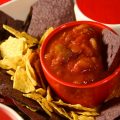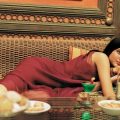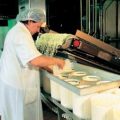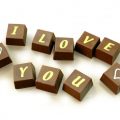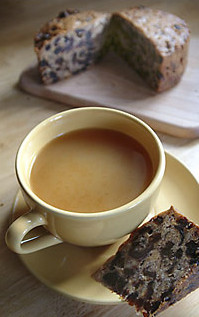 Viennese coffee The second keyword will be“politeness”. “The rabbit was very well-mannered” – When communicating with locals, this phrase from the Russian cartoon about Winnie the Pooh constantly came to my mind. I can’t say that I didn’t like it. I enjoyed the endless “hello”, “good afternoon”, “thank you very much”, “please”, “excuse me”, “pardon” with or without reason. ” Coffee shop” would probably be the third key word needed to describe the Austrian lifestyle. A coffee shop that is over a hundred years old is more the rule than the exception here. Austrians love their coffee shops, love coffee and the rituals associated with it. The Austrian "coffee dictionary" is endlessly diverse, so if you order a waiter just a coffee, most likely, he will bombard you with a bunch of questions. A brief summary of the "explaining Austrian coffee dictionary" Mocca - black coffee, stronger than Americano, but slightly weaker than espresso. Doppelter - double espresso, Austrian style. Einspanner - black coffee with whipped cream, served in a glass. Fiaker - black coffee with rum or brandy and whipped cream.
Viennese coffee The second keyword will be“politeness”. “The rabbit was very well-mannered” – When communicating with locals, this phrase from the Russian cartoon about Winnie the Pooh constantly came to my mind. I can’t say that I didn’t like it. I enjoyed the endless “hello”, “good afternoon”, “thank you very much”, “please”, “excuse me”, “pardon” with or without reason. ” Coffee shop” would probably be the third key word needed to describe the Austrian lifestyle. A coffee shop that is over a hundred years old is more the rule than the exception here. Austrians love their coffee shops, love coffee and the rituals associated with it. The Austrian "coffee dictionary" is endlessly diverse, so if you order a waiter just a coffee, most likely, he will bombard you with a bunch of questions. A brief summary of the "explaining Austrian coffee dictionary" Mocca - black coffee, stronger than Americano, but slightly weaker than espresso. Doppelter - double espresso, Austrian style. Einspanner - black coffee with whipped cream, served in a glass. Fiaker - black coffee with rum or brandy and whipped cream.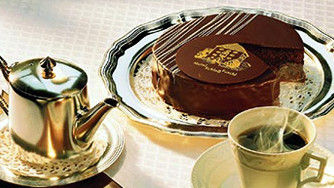 Pharisaer - a strong mocha, decorated withwhipped cream, served with a shot of rum. Verlangerter - weak coffee, the Austrian version of Americano. Melange - a Viennese classic, coffee with milk, sugar and whipped cream, looks like cappuccino, usually garnished with chocolate flakes. Kaiser-Melange - black coffee with beaten egg yolk. Maria Theresia - mocha coffee with orange liqueur and whipped cream, named after the Austrian Empress Maria Theresa, because she preferred coffee prepared according to this recipe.
Pharisaer - a strong mocha, decorated withwhipped cream, served with a shot of rum. Verlangerter - weak coffee, the Austrian version of Americano. Melange - a Viennese classic, coffee with milk, sugar and whipped cream, looks like cappuccino, usually garnished with chocolate flakes. Kaiser-Melange - black coffee with beaten egg yolk. Maria Theresia - mocha coffee with orange liqueur and whipped cream, named after the Austrian Empress Maria Theresa, because she preferred coffee prepared according to this recipe.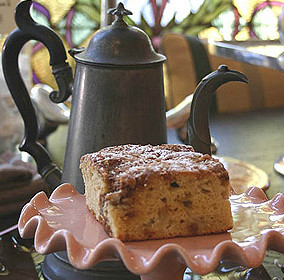 Already in the 18th century, Viennese cafes served abouttwenty varieties of coffee. The popularity of coffee grew in Vienna in arithmetic progression: if in 1840 there were only 80 coffee houses in the city, then by the end of the century there were already 600. Nowadays, in Vienna alone there are about 60 thousand cafes and restaurants where you will be treated to a fragrant cup of coffee. Many Viennese cafes "with history" are associated with the names of famous people: artists, writers, actors, scientists, politicians. Revolutionary Leon Trotsky often drank coffee and played chess with his comrades-in-arms at Cafe Central, the founder of the school of psychoanalysis, Austrian Sigmund Freud preferred to enjoy his cup of coffee at Cafe Landermann, Austrian writer Stefan Zweig was also a regular at Cafe Landermann, and his "colleague in the pen" Thomas Bernhard preferred to work on his works in the Café Demel. The Café Griensteidl was the meeting place of a literary circle founded by Hermann Bahr, Arthur Schnitzler, Hugo von Hoffmannsthal and Karl Krau.
Already in the 18th century, Viennese cafes served abouttwenty varieties of coffee. The popularity of coffee grew in Vienna in arithmetic progression: if in 1840 there were only 80 coffee houses in the city, then by the end of the century there were already 600. Nowadays, in Vienna alone there are about 60 thousand cafes and restaurants where you will be treated to a fragrant cup of coffee. Many Viennese cafes "with history" are associated with the names of famous people: artists, writers, actors, scientists, politicians. Revolutionary Leon Trotsky often drank coffee and played chess with his comrades-in-arms at Cafe Central, the founder of the school of psychoanalysis, Austrian Sigmund Freud preferred to enjoy his cup of coffee at Cafe Landermann, Austrian writer Stefan Zweig was also a regular at Cafe Landermann, and his "colleague in the pen" Thomas Bernhard preferred to work on his works in the Café Demel. The Café Griensteidl was the meeting place of a literary circle founded by Hermann Bahr, Arthur Schnitzler, Hugo von Hoffmannsthal and Karl Krau.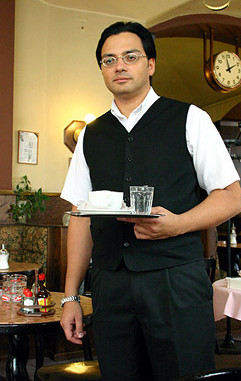 Addresses of the most famous Viennese coffee housesCafeCentral - Herrengasse, 14Griensteidl - Michaelerplatz, 2Demel - Kohlmarkt, 14Sacher - Philharmonikerstr., 4Austrians drink about 360 million liters of coffee a year, which is about 215 liters per person (including infants). This is an impressive figure, and yet the Austrians are only fourth in Europe in terms of coffee consumption per capita. The top three are the Finns, Danes and Norwegians. Coffee came to Austria in the 17th century with the invasion of the Ottoman Empire. In 1683, Turkish troops led by Mustafa Pasha, a general in the Turkish army, tried to capture Vienna. They were thwarted by pure chance: early-rising bakers noticed that the Turks were trying to dig a tunnel under the city walls. Having suffered a defeat, the Turkish army fled, abandoning their equipment, trophies and sacks of coffee beans in panic. Every cloud has a silver lining, you can't say otherwise! The Turks also "gave" the Austrians , from which (thanks to the efforts of Austrian confectioners) the famous strudel was born. The most popular is the apple strudel (Apfelstrudel).
Addresses of the most famous Viennese coffee housesCafeCentral - Herrengasse, 14Griensteidl - Michaelerplatz, 2Demel - Kohlmarkt, 14Sacher - Philharmonikerstr., 4Austrians drink about 360 million liters of coffee a year, which is about 215 liters per person (including infants). This is an impressive figure, and yet the Austrians are only fourth in Europe in terms of coffee consumption per capita. The top three are the Finns, Danes and Norwegians. Coffee came to Austria in the 17th century with the invasion of the Ottoman Empire. In 1683, Turkish troops led by Mustafa Pasha, a general in the Turkish army, tried to capture Vienna. They were thwarted by pure chance: early-rising bakers noticed that the Turks were trying to dig a tunnel under the city walls. Having suffered a defeat, the Turkish army fled, abandoning their equipment, trophies and sacks of coffee beans in panic. Every cloud has a silver lining, you can't say otherwise! The Turks also "gave" the Austrians , from which (thanks to the efforts of Austrian confectioners) the famous strudel was born. The most popular is the apple strudel (Apfelstrudel).

Making Money with Desserts: Success Stories
Evgeniya Polischuk (Fedutinova) instagram:@evgeniyafedutinovavk.com/janeshomebaking– It all started with baking for family and friends. Gradually, I started posting photos of my baked goods on Instagram – and orders started coming in. I made my first custom-made cake on October 13, 2014, and a little earlier I started making macaroons and cupcakes. You could say that the business “found me”, I am very […]

Soups are cold recipes with photos
Cold cucumber soup with yogurt and lemonsorbet from the chef of the restaurant La Taverna Alexander Zhurkin Photo: Getty Images Ingredients: Plain yoghurt – 125 g Cucumber – 150 g Lemon/lime sorbet – 50 g Cocktail shrimp – 24 g Fresh ginger juice – 1 g Lime juice – 5 g Fresh orange juice – 5 g Parsley – 1 g Pink pepper – 1 g Watercress – […]

barbeque kebab
Pork tenderloin in glaze Photo:Dmitry Bayrak/dbstudioPreparation time: 20 minutes + marinating time.Calories: 454 kcal per serving.For 4 servings: 4 pork tenderloins (approximately 300 g each), 1 onion, 2 cloves of garlic, 1 tsp. lemon zest, 1 tsp. lemon juice, a pinch of ground cumin, coriander and turmeric, 1 tbsp. vegetable […]

Pierre Duacan: dietary recipes: Ducane diet
Beetroot soup Photo:Season’S, Luxury Hotels RepresentationYou will need:· Boiled beetroot – 60 g· Fresh cucumbers – 20 g· Red radish – 20 g· Green onions – 10 g· Egg – 1 pc.· Drinking mineral water – 200 g· Salt – 1 gPreparation:· Boil the egg and beetroot.· Grate the cucumbers, radish and part of the beetroot. Put everything […]
